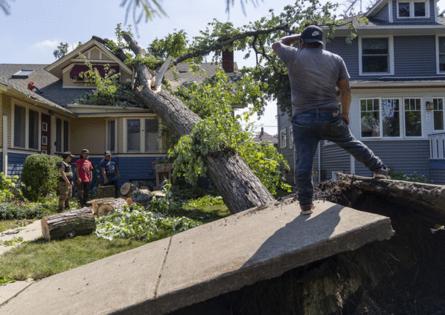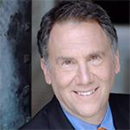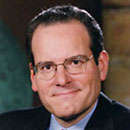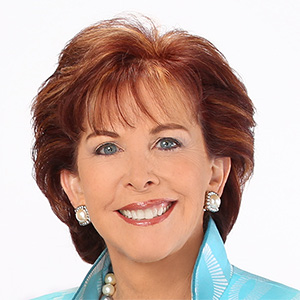State Farm defends hefty 27.2% hike in Illinois homeowners insurance rates
Published in Business News
Challenged by everyone from consumer groups to Gov. JB Pritzker over its imminent 27.2% homeowners insurance rate increase in Illinois, State Farm faces the question: Will it seek to defend its widely criticized decision?
The answer: hail yes.
Citing more frequent extreme weather events such as wind, hail and tornados, insufficient premiums to cover claims and the rising cost of repairs due to inflation, State Farm said its Illinois homeowners business has seen “unsustainable” losses in 13 of the last 15 years. It needs to raise rates to remain “financially strong,” the company said in a statement.
“These losses are driven in part by severe weather damaging communities across the state,” State Farm said. “No company can absorb such losses forever and still be there for customers when disaster strikes.”
In 2024, for example, State Farm paid out $1.26 in claims for every $1 premium collected from Illinois homeowners, the insurance giant said. That included $638 million in hail damage claims, second only to Texas.
The rate increase, first reported by the Tribune last week, has created a political firestorm for Bloomington-based State Farm, the largest home insurer in Illinois.
State Farm is raising homeowners insurance rates in Illinois by a whopping 27.2% beginning Aug. 15, according to a filing with the state last month. The rate hike, one of the largest in the state’s history, will affect nearly 1.5 million policyholders. New policyholders will pay the higher rates as of Tuesday.
In addition, State Farm is implementing a minimum 1% deductible on all wind and hail losses, raising the out-of-pocket costs for homeowners filing a related damage claim.
On Thursday, Pritzker issued a statement expressing concern over State Farm’s “unfair and arbitrary insurance rate hike,” challenging the methodology used to calculate the increased premiums to be paid by Illinois homeowners.
Pritzker said the increases are based on catastrophe loss numbers that are inconsistent with the Illinois Department of Insurance’s analysis, concluding that State Farm was shifting out-of-state costs onto Illinois homeowners.
In its statement, State Farm said it does not shift costs between states and dismissed Pritzker’s claims as “political rhetoric.” The insurance company said it has provided information to the state to support its position.
“Illinois rates are based on Illinois risk — it’s as simple as that — not for losses in other states,” State Farm spokesperson Gina Morss-Fischer told the Tribune on Monday.
State Farm has been hit hard by recent weather-related losses in other states.
For example, the insurance company has received nearly 13,000 claims and paid out more than $4.2 billion to California homeowners who suffered losses during the devastating wildfires that raged across the Los Angeles area in January, according to an update posted last week on its website.
While State Farm contends that out-of-state losses do not directly affect Illinois premiums, at least one industry analyst said there is a potential connection.
If losses are big enough in one state, insurance companies may have to pay more for reinsurance — the insurance company for the insurance companies — resulting in increased rates for policyholders across the country, according to Shannon Martin, an industry analyst for Bankrate.
In addition, as people rebuild from wildfires in California to floods in Florida, the increased costs of everything from labor to materials can deplete resources and make it more expensive to do repairs in other parts of the country, including Illinois, Martin said.
“You don’t operate in a vacuum, and you can’t, because we’re all part of a risk pool,” Martin said. “When there’s loss in one area, everyone’s going to feel it in some way, shape or form.”
The increased frequency of extreme weather events has pushed up homeowners insurance rates across the country by 40.4% over the past six years, according to LendingTree’s “State of Home Insurance” report for 2025. Illinois had the seventh highest increase, rising 59.5% between 2019 and 2024, the report found.
In February, Northbrook-based Allstate raised homeowners insurance rates by 14.3% for nearly 248,000 Illinois customers. Last year, Allstate raised homeowners insurance rates in Illinois by 12.7%, while State Farm implemented a 12.3% increase.
State Farm’s latest and likely largest-ever Illinois increase has renewed calls for broader legislation to regulate the rates insurers can charge homeowners. Unlike most states, in Illinois, which is home to both State Farm and Allstate, insurers do not need regulatory approval to raise premiums.
Legislation is pending in Springfield that would require regulatory approval of larger rate hikes.
“It’s time for the General Assembly to act,” Abe Scarr, director of Illinois PIRG, a nonprofit consumer advocacy organization, said in a statement. “At a minimum, Illinois should empower the state Department of Insurance to reject or modify excessive rate hikes, a basic consumer protection that residents in almost every other state enjoy.”
At the same time, increased regulation can precipitate companies to abandon markets where it is no longer profitable to insure homes exposed to more frequent weather events. A December report by the Senate Budget Committee said insurance markets have been destabilized from New England to Hawaii as providers decline to renew homeowners policies.
“Having more oversight, on one hand, could really help homeowners, but on the other hand, if carriers don’t want to be there, that puts homeowners in a pickle,” Martin said. “So it’s about finding that balance where people can find affordable and available insurance at a rate that insurance companies are satisfied that they’re profitable.”
Illinois ranked 22nd in average annual home insurance costs at $2,743 per year, according to the LendingTree report.
For State Farm, the average annual premium for its 1.1 million non-tenant homeowners policies in Illinois is $1,700, which would project an increase of about $475 per year after the 27.2% rate hike goes into effect, the company said Monday.
With renters and condo coverage included, State Farm has about 1.5 million total homeowners policies in Illinois.
While homeowners rates are going up, State Farm is offering a bit of good news for Illinois customers this week. On Friday, State Farm’s auto insurance rates in Illinois will decrease an average of 5.7%, with some customers seeing reductions in premiums of up to 15%, based on lower projected claims costs, the company said.
©2025 Chicago Tribune. Visit at chicagotribune.com. Distributed by Tribune Content Agency, LLC.












Comments